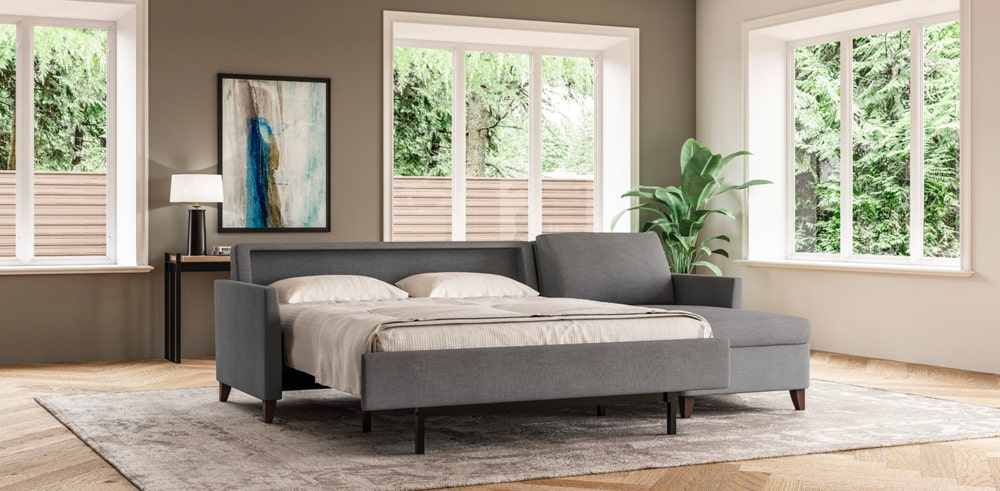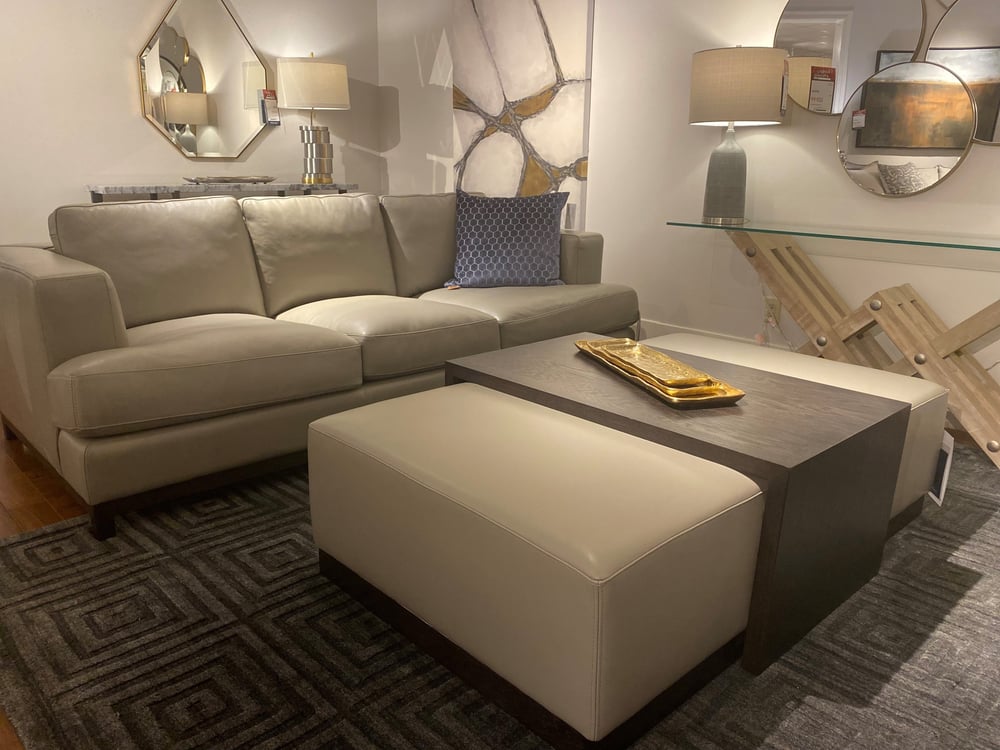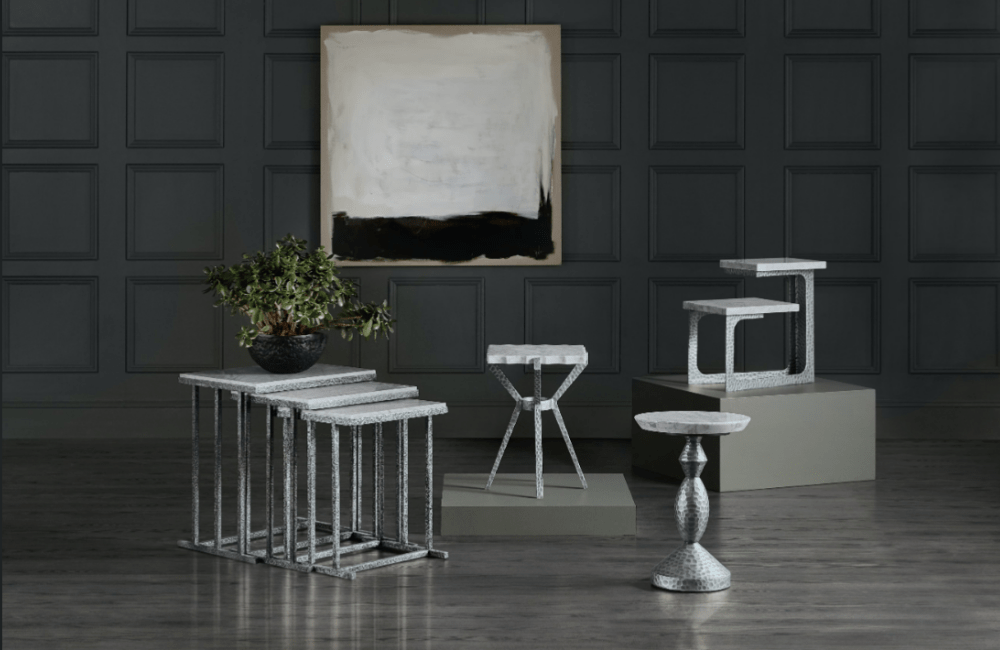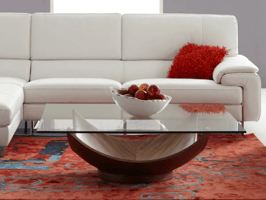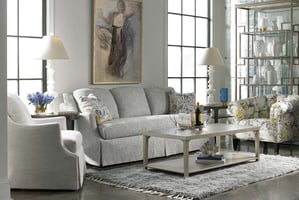There’s something so timeless and elegant about glass furniture. Whether it’s a glass top table, a...
What is Multi-Functional Furniture?
The idea of multi-functional furniture is quite appealing, isn’t it? You’re getting one piece that will fulfill a few needs in your home – what’s not to like? But there may be a little more to it than that. You may find that, based on the spacial requirements of your home, multi-purpose furniture might not be the best fit for you. Then again, maybe it is!
At McElheran’s Furniture + Design, we have in-house designers known as Design Guides. With over 60 years of combined design experience, they know their way around a space plan and how to get the most out of your furniture. If you think you might need multi-functional pieces, whether you buy from us or not, we’ll help you figure out if that’s the best option for you.
In this article, one of our Design Guides, Teresa, will go over the benefits of multi-purpose furniture and some examples, too. And we acknowledge that it’s not for everyone, so we’ll also let you know when to avoid those kinds of pieces. That way, you’ll be able to see if multi-functional furniture is going to be the best decision for what you need in your home.
And, just so we get off on the best foot possible here, let’s go over what multi-functional furniture actually is.
What does it mean when furniture is multi-functional?
Multi-functional or multi-purpose furniture are pieces that serve more than one function in the home. These pieces accommodate different needs and variables, allowing for more flexibility in your space.
The desire for multi-use furniture has also increased as we’ve changed the way we’re building homes. Newer builds are moving away from closed-off rooms that only have a singular purpose, like a study or a formal dining room. Because of the popularity of open concept layouts, rooms are becoming more multifunctional, so furniture has naturally followed suit.
Fewer rooms are static nowadays - they’re dynamic, ready to facilitate different events and accommodate extra company. Look at living rooms, for instance. Those can be family rooms, TV rooms, entertainment areas, formal sitting rooms – all depending on the occasion and who’s using the space.
Multifunctional furniture allows us to change the layout of a room at a moment’s notice. By changing how we use or position the furniture, we can accommodate more people or give ourselves more space in our homes.
Multi-functional furniture can be a little less obvious, too. It can serve a singular function but allow for a lot of flexibility in your room – like a swivel chair. A swivel chair’s sole purpose is for sitting, but the swivel allows you to easily change positions and face different focal points in a room.
What are the benefits of multi-functional furniture?
Cost-effective
Multi-purpose furniture offers a more cost-effective route because you’re basically getting two (or more) pieces of furniture for the price of one. For example, you could use an oversized storage ottoman as a coffee table instead of buying a coffee table, an ottoman, and a separate piece for storage.
You’re getting more bang for your buck because that one piece of furniture is giving you three different options – and you can even use it for all three functions at the same time! Now that’s multifunction at its finest.
It should be noted, though, that multi-use furniture will likely cost more than if you bought one piece that served a singular purpose. So, that oversized storage ottoman will generally cost more than a regular ottoman, but it would still be less expensive than buying a coffee table, storage piece, and an ottoman.
Maximizes space
A big reason why a lot of people opt for multi-use furniture is that they live in a smaller space, and they’ve found the less stuff they have, the better! When you only need to buy one item instead of a few, that one piece of furniture will take up less room.
This also means that you can truly make the most out of the space you have – more often. For instance, instead of having a designated guest room that only gets used a few times a year, you can furnish it with multi-purpose pieces - like a sleeper sofa – so you can lounge in that room when you don’t have company.
As Teresa says, "Your needs are met on more levels," which allows you to get more out of the space you have.
Allows for flexibility
Again, with the rise in popularity of open concept layouts, our homes have become more flexible – some of us even have literal “flex rooms.” So, a secondary bedroom may be more of an office/guest room or workout studio/sewing room.
Multi-use furniture can also give you that security of knowing you can accommodate whoever comes into your home. If you’d like extra seating for dinner – perfect, you have an expandable table. If you need an extra bed – good thing you have a sleeper sofa in your office.
Less clutter
With multi-use furniture, there’s generally less clutter because you simply have less furniture and accessories getting in your way.
It's a “less is more," or minimalist, approach to design.
And the very concept of minimalism is based on every item in your home serving a purpose. Everything is there for a practical reason – space, time, and money is not wasted on furniture that doesn’t get used very often.
Minimalism is quite a popular trend at the moment and if you think that's a style you'd like to explore, read The Top Home Design Trends for 2022.
When should I avoid multi-functional furniture?
Multi-functional furniture can really have a place in anybody’s home, but there are a couple of instances where you might want to shy away from it.
You do not want to compromise on quality
This isn’t to say that multi-functional furniture is poor quality, by any means. And in some cases, like with tables, the way you use them isn’t going to affect how well-made they are. But when you’re looking at furniture that deals with comfort, that’s where you might have to compromise a bit.
Teresa points out that you'd probably find more comfort in a high-quality bed and sofa on their own, than what you would get from a sleeper sofa. The sleeper sofa may be exactly what you need as a convertible piece, but it probably won’t be as comfortable as two individually well-made pieces.
You have the space for more furniture
A big advantage of multi-functional furniture is that it can save you space, but not everybody needs that. If you have a lot of rooms in your home or the rooms that you have are quite large, you may not need to take advantage of the space-saving capabilities of multi-functional furniture.
The rooms in your home serve very distinct purposes
Again, multi-functional furniture was born out of necessity. Newer builds have rooms that are multi-purpose and the furniture followed.
So, if you have an older home or one that has a more closed-off floor plan where each room has a very specific purpose, you may not need the flexibility of multi-functional furniture.
What are some examples of multi-functional furniture?
Nesting tables
These tables are designed to go inside each other – kind of like a matryoshka doll. You can spread them out as needed and because each table is a different height, you can pick and choose which height suits you best depending on what you’re doing.
Ottomans
Ottomans can really offer you a lot in the way of multi-purpose. Ottomans give you extra seating (in a variety of forms), footrests, storage, and additional landing surfaces. Plus, they’re just a great piece that can really bring a whole room together.
Recliners
One minute you’re sitting straight up and with one pull of a lever or press of a button, you’re leaning back, ready for a nap. Recliners aren’t as multi-purpose as, say, an ottoman, but they do fill multiple needs in a space.
Bed frame with storage
It’s particularly helpful when large pieces of furniture, like a bed, can serve a few different functions since you’re already losing out on valuable space. Bed frames are available with built-in drawers, shelves, or enough clearance underneath to store items.
Sleeper sofas (hide-a-beds, futons, sofa beds)
This is probably one of the most obvious examples of multi-use furniture. By day, a sleeper sofa gives you seating and by night, it can be a bed for guests (or yourself).
A sleeper sofa can also make an entire room flexible. It can be an office with extra seating most of the time and when you have guests over, your entire room can become a secondary suite. The room’s purpose changes with how you plan to use your sleeper sofa at the time.
Collapsible and expandable dining tables
By folding down a section of your table (if applicable) you can nestle it up against a wall to give you more space, especially when your table isn’t being used by very many people. And with expandable tables, like tables with leaves, you can easily drop in a leaf or two to make it roomier for more guests.
Sofa tables and consoles
These types of tables can provide surfaces for, really, whatever you need! A sofa table can be a desk while you’re working from home and then a decorative landing surface when you’re not on the job. Console tables can serve as TV stands or entryway tables, too. It really just depends on where you see the need for a surface in your home. And as your needs change, you can move these tables accordingly.
Swivel chairs
As mentioned before, these are a little less of an obvious form of multi-use furniture. But, with a quick swivel, you can change the focal point of a room or completely open up your guests to a different space in your home.
Is multi-functional furniture right for me?
Well, to sum it all up, multi-functional furniture may not be the best choice for you if:
-
You don’t want to compromise on quality
-
You have a lot of space in your home
-
The rooms in your home serve very distinct purposes
And it’s a great option if:
-
You want to save space
-
You need flexibility from your furniture
-
You prefer a minimalist design
And, speaking of saving space, another situation where multi-purpose furniture would come in handy is if you’re downsizing your home. When you downsize, you’ll likely have to do away with quite a few pieces and, in turn, ask a lot more out of the furniture you’re keeping.
For more guidance on that, check out Downsizing: 6 Tips for Finding Out What Furniture to Take to Your Smaller Home.
And if you’re ready to get the most out of your furniture, drop by McElheran's! Our Design Guides would love to point you in a direction that will make the most sense for your home and satisfy the requirements of your space.

